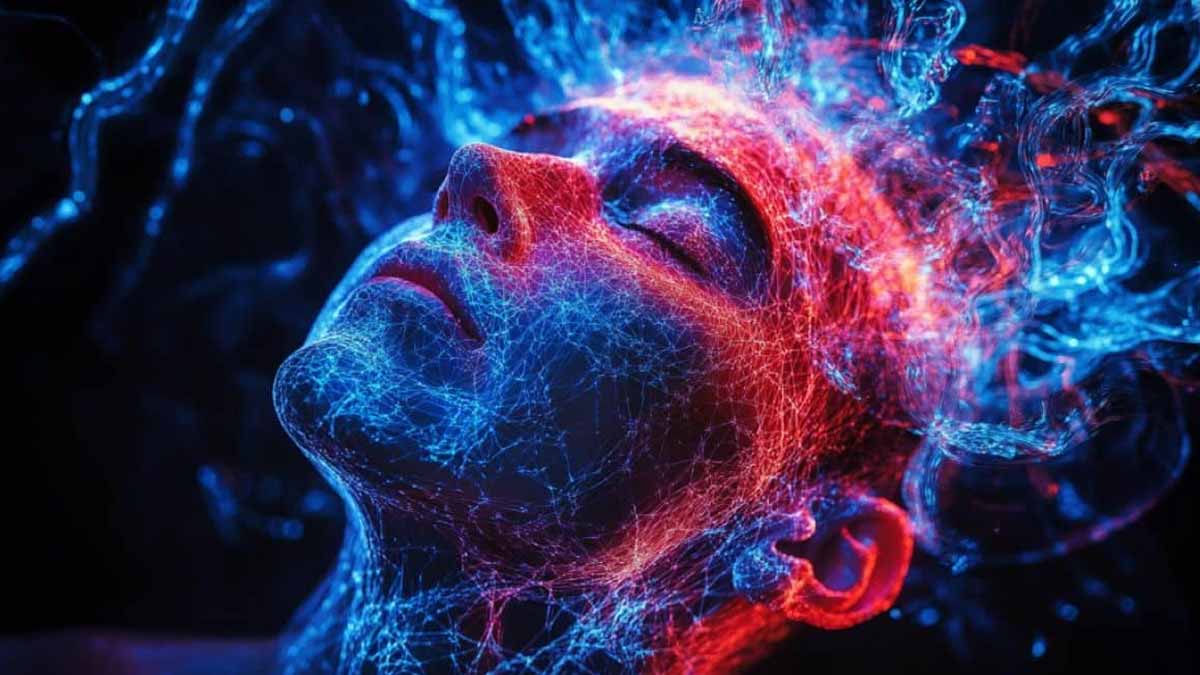Our minds seem personal, yet strange physics may run the show. A quantum process could thread through the brain’s inner scaffold and sync with the wider cosmos, according to a bold line of research. The idea unsettles, because it mixes neurons with entanglement. Still, new experiments keep pushing the boundary. While the debate stays fierce, data now hint that nature can protect delicate effects inside living tissue, and even use them for speed and efficiency.
From neurons to the cosmos: the case for a shared substrate
Neuroscientist Mike Wiest argues that tiny protein tubes inside neurons, called microtubules, can carry information that does not sit still. The claim builds on a framework proposed by Roger Penrose and Stuart Hameroff. Their Orch-OR model ties moments of awareness to wave-function collapse. If those collapses entangle with distant particles, then mind ties into fabric that reaches beyond a single brain.
Quantum entanglement links particles so tightly that measuring one fixes the other, even across distance. Experiments have confirmed this countless times, and technologies now use it. Critics say the brain is too warm and wet for such fragile states. Supporters answer with biology’s own tricks, where coherence often boosts speed, cuts waste, and keeps systems aligned without overheating. The quantum process idea grows from that logic.
Inside neurons, a quantum process riding microtubules challenges old limits
Penrose and Hameroff placed the action inside microtubules, which line every neuron. Wiest’s team tested one prediction in Rattus norvegicus. Rats given a microtubule-stabilizing drug stayed awake 69 seconds longer under isoflurane than littermates. Because anesthetics also hit GABA receptors, the group focused on the tubes. The delay suggests those structures matter for how anesthesia flips awareness off.
Hardware studies add force. A 2024 Physical Review E paper indicates that myelin around axons can act like a cylindrical cavity that emits entangled photon pairs at body temperature. In Alberta, Jack Tuszynski blasted tubulin with ultraviolet photons and saw coherence hold for five nanoseconds, thousands of times longer than expected. At the University of Central Florida, microtubules re-emitted visible light for up to one second, long enough for neurons to signal across a network.
Evidence and counter-evidence in a warm, noisy brain
Skeptics point to heat. A 2022 magnetic-resonance study of 40 healthy volunteers found deep brain regions running above 104 °F (40 °C) in the afternoon while thinking stayed intact. Heat usually kills fragile quantum states, so they doubt persistence inside tissue. Yet biology often finds loopholes. In plants and bacteria, pigments use coherence to sample many paths at once, pushing photosynthetic efficiency above 95 percent without exotic cooling.
This nuance cuts both ways. Warm tissue does not prove mind is quantum; it shows that warmth does not block it. The quantum process claim needs tests that beat classical explanations. Some imaging already maps signatures of perception without quantum tools. Still, when anesthesia acts, subtle changes appear. Early terahertz scanners tuned to microtubule resonances report signals that fade under anesthetic and rebound on waking. Those hints keep researchers digging.
How a quantum process could stretch from cortex to deep space
Entanglement works at any distance. If collapses inside microtubules entangle with far-flung partners, then brain events might link to matter beyond Earth. Penrose’s equations allow such links to reach across the universe. The thought feels eerie, yet it simply extends the same physics that lets two photons act as one. If mind uses entanglement, then local experience could share a substrate with spacetime itself.
Nature shows that coherence can persist at everyday temperatures. The myelin study found biphoton entanglement near 98 °F (36.7 °C). Plant complexes keep coherence at room temperature. These results undercut the strongest objection to quantum mind models. Wiest has said that if the mind proves quantum, our view of coma patients and nonhuman animals will change. The stakes touch ethics, medicine, and the way we define who counts as aware.
What tests next, and why stakes reach far beyond labs
A theory wins when it predicts what others cannot. Teams now build noninvasive terahertz scanners to lock onto microtubule resonances through the skull. The goal is to watch awareness flicker during sleep, surgery, and seizure. If those signals map to perception in real time, then therapies may follow. Stabilizing microtubules could tune anesthesia in chemotherapy patients or help disorders of consciousness.
Skeptics will still ask for a unique marker that no classical model can mimic. That demand is fair, because correlation can fool us. Anesthetics touch many targets, and clean isolation is hard. Yet small wins add up. Reversible entanglement clues might inspire brain-scale quantum networks that move information faster than silicon. The quantum process proposal remains daring, not proven, but the firewall between mind and matter now shows cracks.
Why this frontier matters now for mind and science
The case is not closed. Data keep arriving, and each study trims an old doubt. As evidence accumulates, the question shifts from whether physics can fit the brain to how life shapes physics for speed and stability. A quantum process would not reduce feelings to math; it would expand the map of experience. That wider map could connect personal awareness with a lawful universe, without draining its mystery.
